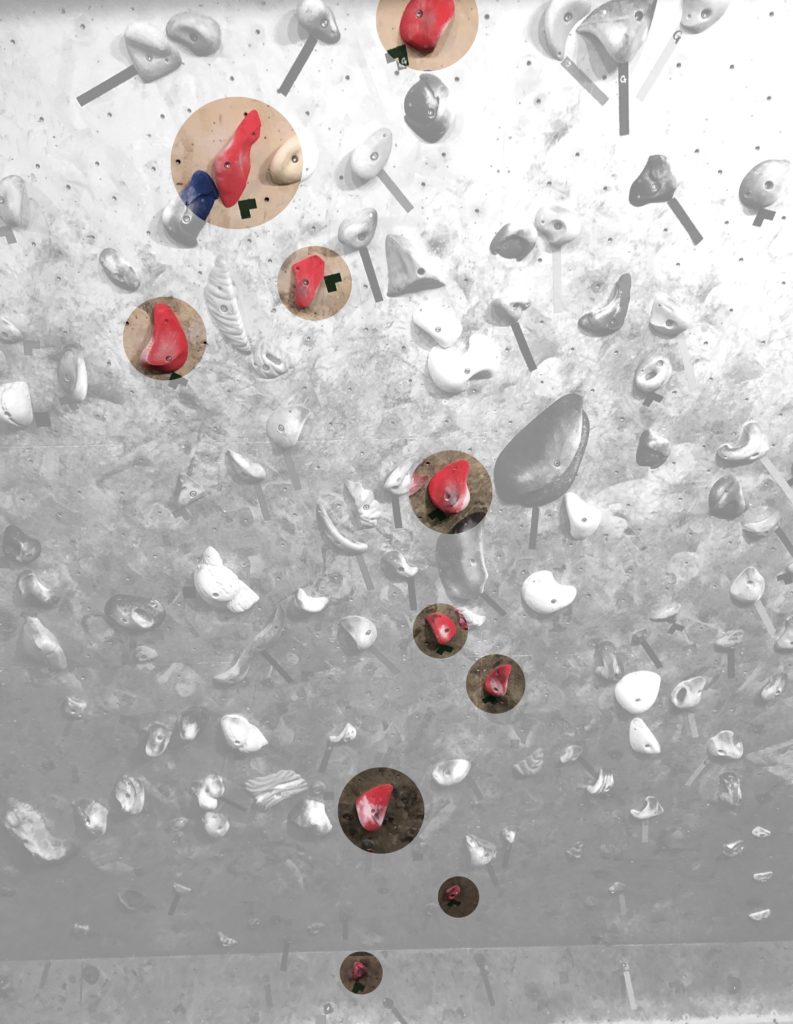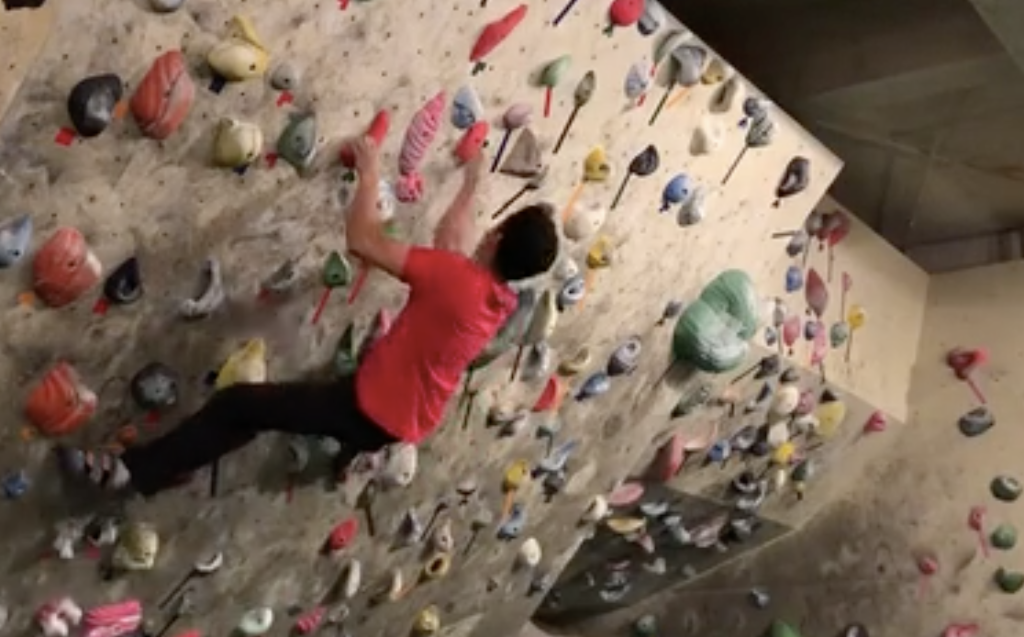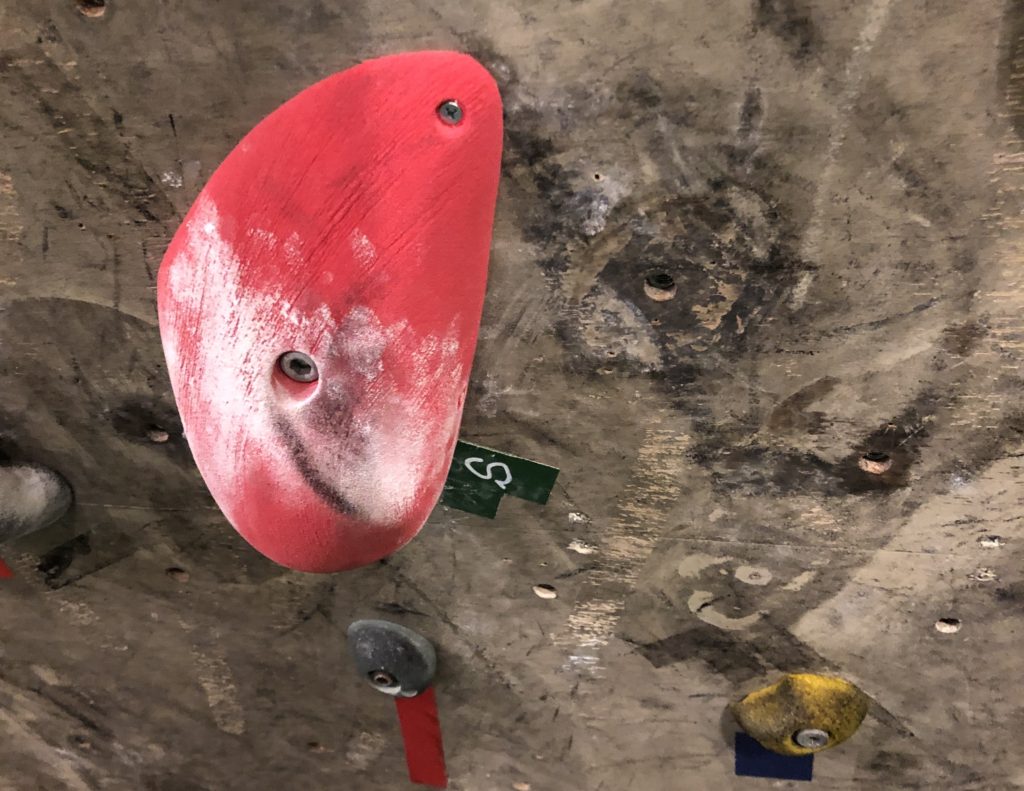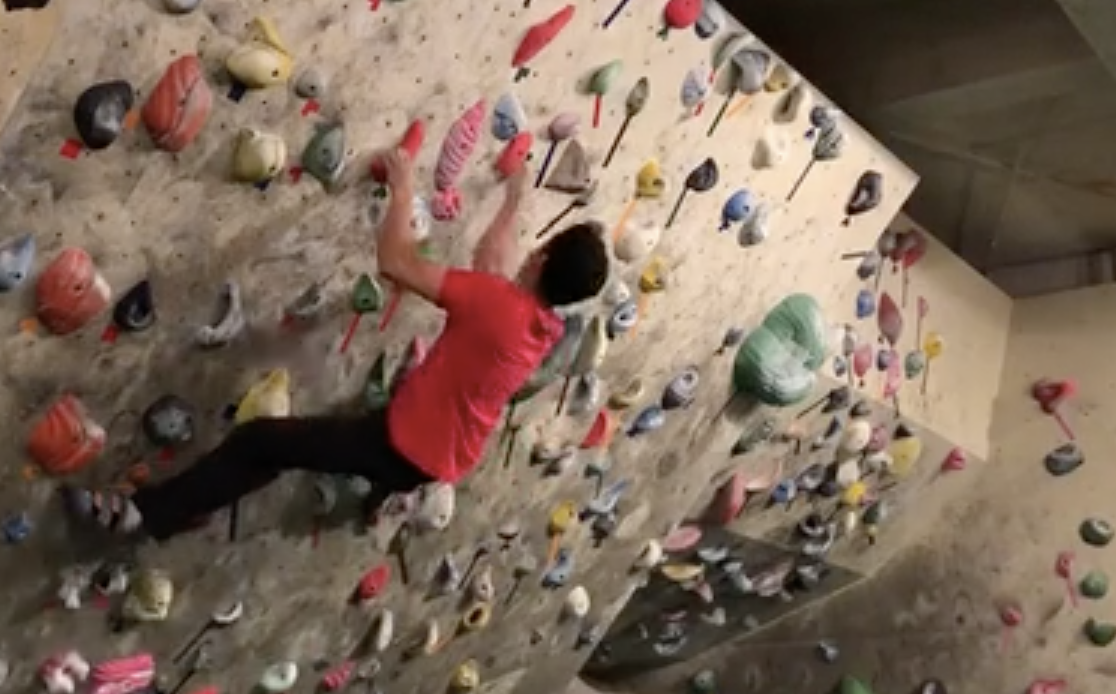This is a basic, strong slope challenge using the ‘Theory’ series. Footwork with hold textures and training to keep good posture with bad feet. The elements are very colorful.
Fit your body into this footwork and make it your own. When expressing the footwork you’ve learned on your body on the wall, you’ll need to change the direction of the texture to the number of steps, stance (distance between your feet), and Be careful not to compromise, as much as possible, when making your choice for such things as.
Overall
Wall Angle: 40° (130°) / Wall Height: 3.8m / Location: Rockbeans / Set by Shogo

HOLDS
SET Name: Theory
From Top to Start
- TH-LG1.5 (Top)
- TH-LG3.1
- TH-MD1.4
- TH-LG1.3
- TH-LG2.3
- TH-MD1.4
- TH-LG1.1
- TH-XL1.2 (Start)
- Foothold unknown
VIDEO
Point of Movement

The body position of the fourth and fifth moves as you go for the under-hold makes it clear whether your posture is good or bad. Please watch the video of your own climb to confirm.
The key to posture here is to lower your center of gravity. Assuming that underholding is handled by raising your body up is a big mistake and is a classic example of a bad habit to develop. Be nervous about the difference in your posture.
Key of hold

This time the key hold is the ‘Theory-XL1.2’ used for the start. This hold is characterized by a pronounced diagonal bulge. How to tread on the texture is one of the most important factors to consider in the task. Conversely, holds with pronounced textures and bulges are easier to come up with ideas for footwork.
From a wide stance cross-step, catching this bulge with your right foot with a bit of crabby thighs and snapping this bulge with your right foot can make a difference in whether you get hemmed in on the next larger move or maintain a good posture.
It’s details like these that you would normally overlook, but it’s in these details that the difficulty of basic practice sets lies. Footwork that says it doesn’t matter which foot you step on or how you step on it, is not the best way to practice the basics. A challenge that requires a single move, no wastage anywhere, and yet requires nerve-wracking subtlety is ideal for mastering the kata, as you discover something new with each repetition.

